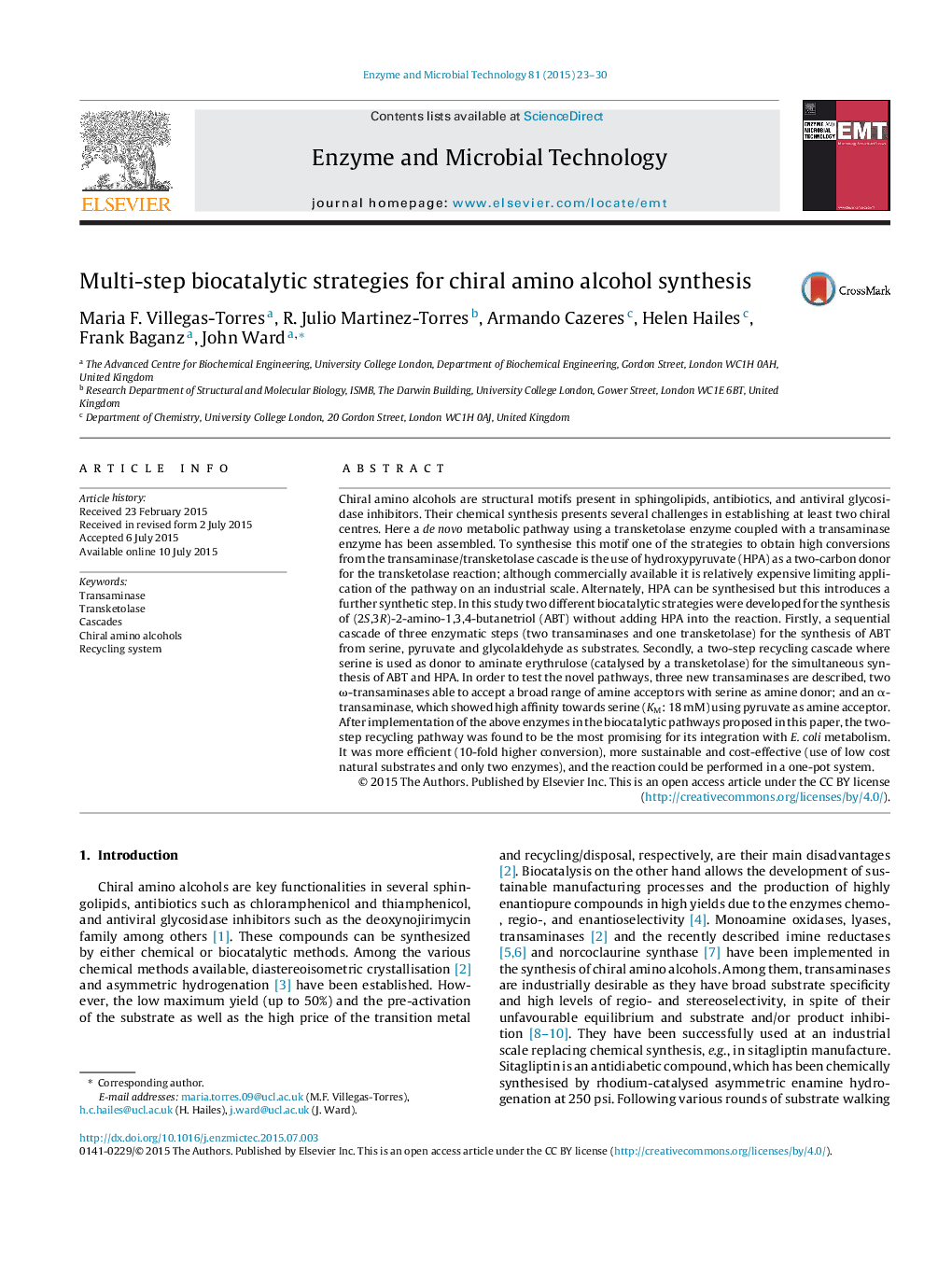| کد مقاله | کد نشریه | سال انتشار | مقاله انگلیسی | نسخه تمام متن |
|---|---|---|---|---|
| 6488246 | 42624 | 2015 | 8 صفحه PDF | دانلود رایگان |
عنوان انگلیسی مقاله ISI
Multi-step biocatalytic strategies for chiral amino alcohol synthesis
دانلود مقاله + سفارش ترجمه
دانلود مقاله ISI انگلیسی
رایگان برای ایرانیان
کلمات کلیدی
موضوعات مرتبط
مهندسی و علوم پایه
مهندسی شیمی
بیو مهندسی (مهندسی زیستی)
پیش نمایش صفحه اول مقاله

چکیده انگلیسی
Chiral amino alcohols are structural motifs present in sphingolipids, antibiotics, and antiviral glycosidase inhibitors. Their chemical synthesis presents several challenges in establishing at least two chiral centres. Here a de novo metabolic pathway using a transketolase enzyme coupled with a transaminase enzyme has been assembled. To synthesise this motif one of the strategies to obtain high conversions from the transaminase/transketolase cascade is the use of hydroxypyruvate (HPA) as a two-carbon donor for the transketolase reaction; although commercially available it is relatively expensive limiting application of the pathway on an industrial scale. Alternately, HPA can be synthesised but this introduces a further synthetic step. In this study two different biocatalytic strategies were developed for the synthesis of (2S,3R)-2-amino-1,3,4-butanetriol (ABT) without adding HPA into the reaction. Firstly, a sequential cascade of three enzymatic steps (two transaminases and one transketolase) for the synthesis of ABT from serine, pyruvate and glycolaldehyde as substrates. Secondly, a two-step recycling cascade where serine is used as donor to aminate erythrulose (catalysed by a transketolase) for the simultaneous synthesis of ABT and HPA. In order to test the novel pathways, three new transaminases are described, two Ï-transaminases able to accept a broad range of amine acceptors with serine as amine donor; and an α-transaminase, which showed high affinity towards serine (KM: 18 mM) using pyruvate as amine acceptor. After implementation of the above enzymes in the biocatalytic pathways proposed in this paper, the two-step recycling pathway was found to be the most promising for its integration with E. coli metabolism. It was more efficient (10-fold higher conversion), more sustainable and cost-effective (use of low cost natural substrates and only two enzymes), and the reaction could be performed in a one-pot system.
ناشر
Database: Elsevier - ScienceDirect (ساینس دایرکت)
Journal: Enzyme and Microbial Technology - Volume 81, December 2015, Pages 23-30
Journal: Enzyme and Microbial Technology - Volume 81, December 2015, Pages 23-30
نویسندگان
Maria F. Villegas-Torres, R. Julio Martinez-Torres, Armando Cázares-Körner, Helen Hailes, Frank Baganz, John Ward,